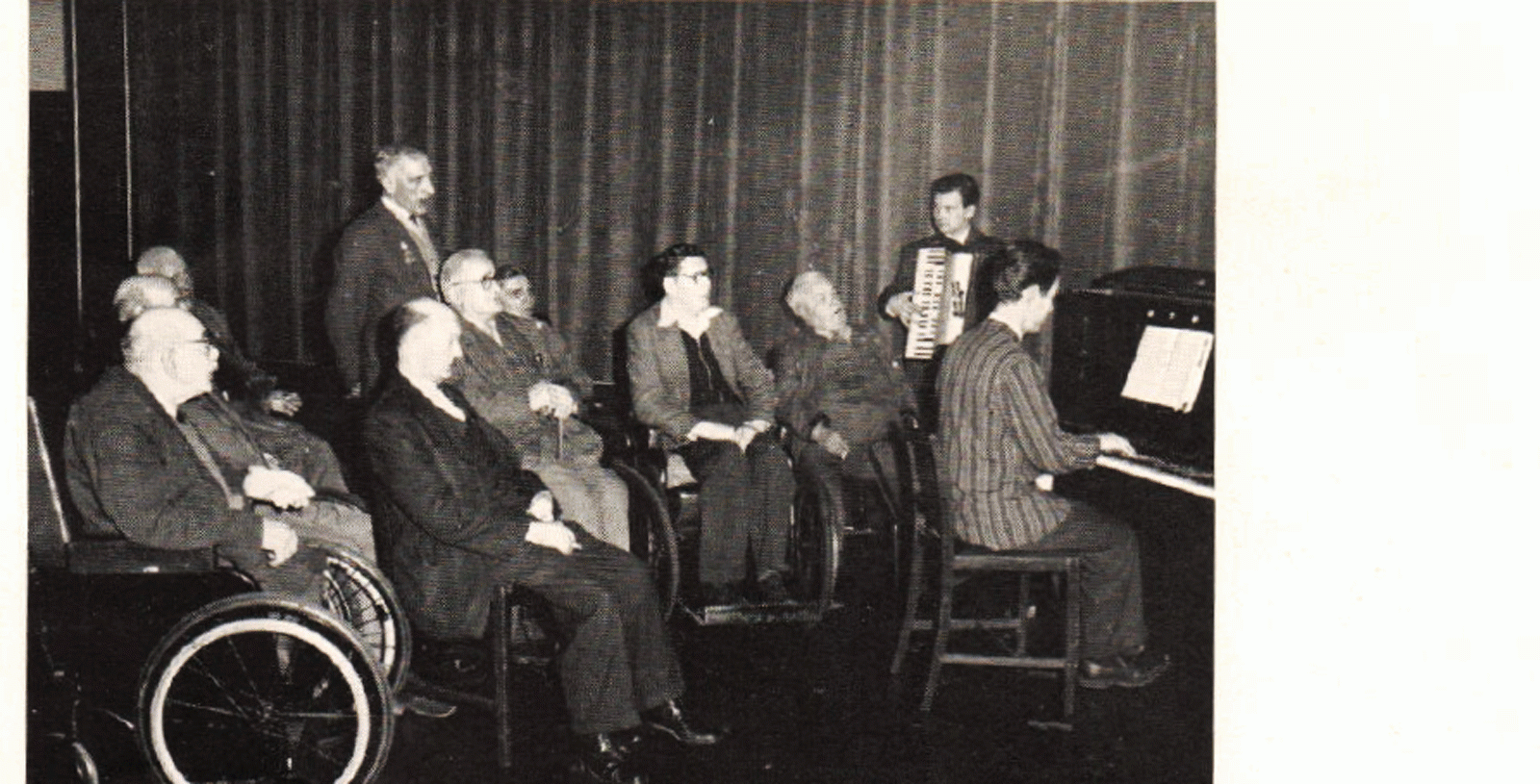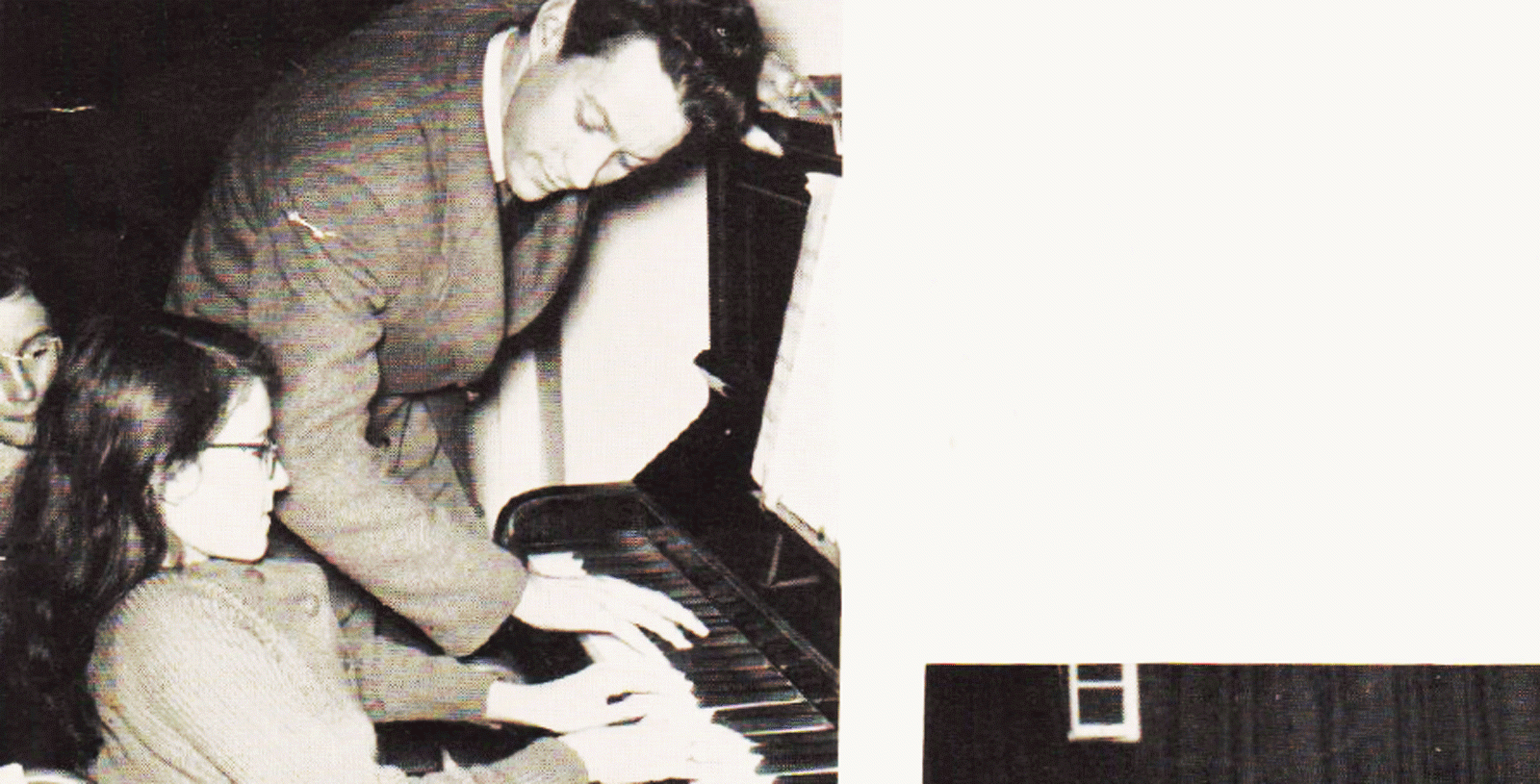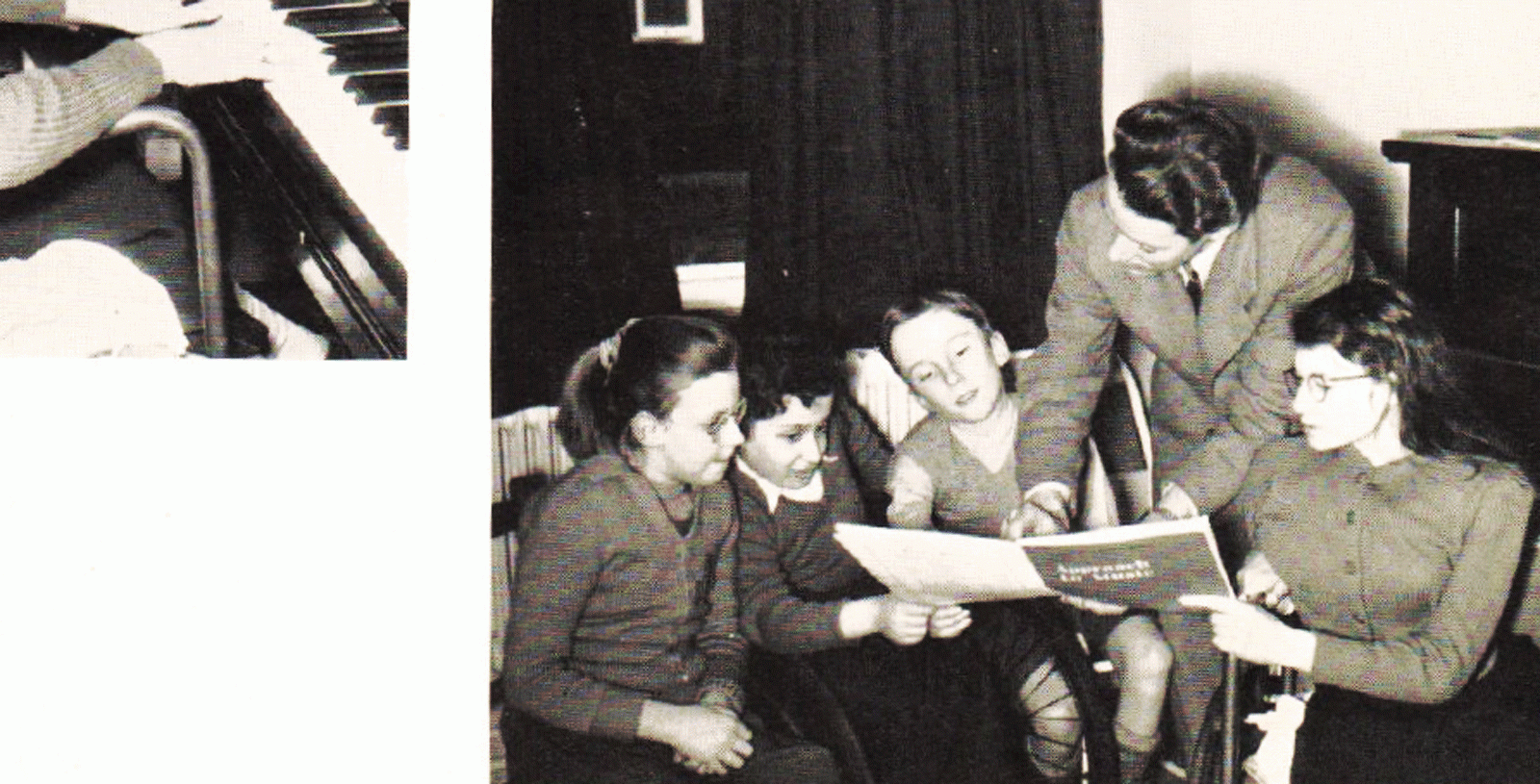Imagine a summer's day on the green: there are brief snapshots of warm sunshine, family outings, a military band, a jazz band, children's games and the quiet ending as the day closes.
When the clock strikes twelve and darkness rules, the park may seem somewhat mysterious at first – various nocturnal creatures scurrying about their business – but then the park sings its own quiet song, a nocturne, and a gentle breeze finally ushers in the dawn as the clock strikes six. Every year there is more than one Funfair on the Green in the green spaces of our towns and cities: flashing lights, hair raising rides, bustling crowds, and, of course, the Merry-go-round, cranking itself up to waltz-time speed, are just some of the attractions which delight both children and adults.
The description above comes from the original program note for Australian composer John Carmichael's On the Green, which was written in 2007 and premiered at St. Martin-in-the-Fields in the City of Westminster, London. More than ten years after its world premiere, this overlooked gem will be performed in Australia for the first time on Saturday 4 April at the South Melbourne Town Hall. Ahead of the concert, we asked John a few questions about his work.
 War veterans joining a choral practice, at the Star and Garter Home for Disabled Sailors, Soldiers and Airmen at Richmond, Surrey.
War veterans joining a choral practice, at the Star and Garter Home for Disabled Sailors, Soldiers and Airmen at Richmond, Surrey.
Who (or what) influences your compositional style?
Music of French composers has been a strong influence on my style; I admire the joie de vivre you find in Chabrier and Poulenc, the sensuous sonorities and exoticism of Ravel and Debussy, and the sheer lyricism of Fauré. Flamenco and the rhythmic pulse of Spanish and Latin American music – which I have always loved – became even stronger during my years as musical director of the Spanish Dance group. Prokofiev, Bartok and Lutoslawski are inspirational and tempt me to expand my horizons. Above all, I think what influences me is the desire to engage the listener in music’s ability to paint a picture, to write a story in tones from which stems, what people term, an ‘accessible’ style of writing.
Your music is impeccably crafted with a concentration on melodic and thematic development, did you ever dabble in ‘experimental’ music and if not, why?
The term ‘crafted’ now used to describe a work has sometimes, I think, an overtone implying perhaps lack of innovation or inspiration; I find the term cropping up in connection with my work and can only say that working on shaping, giving form and structure to a work is what every composer does in order to present his vision in the clearest form. ‘Concentration on melodic and thematic development’ to quote your question point, can also lead to one being dubbed as a ‘tune smith’ as if there were nothing more than a collection of tunes, but the melodic and thematic material is just the starting point, while searching and crafting is what follows. Experimenting tends to be a sine qua non in our present age, and for some composers it is in their genes so to speak and some produce eye opening results. There are others, like myself, who find that what they want to express in their music works best without what is thought of as ‘experimental’. For me, every new work is an experiment.
 Young patients at the Ministry of Health National Spinal Injuries Centre, Stoke Mandeville Hospital, Aylesbury, enjoying their weekly lesson.
Young patients at the Ministry of Health National Spinal Injuries Centre, Stoke Mandeville Hospital, Aylesbury, enjoying their weekly lesson.
On the Green is about celebrating the green spaces where city dwellers can enjoy the open air. What role do you think nature and open spaces has on our lives (in particular for those in urban areas)?
These green spaces allow people, city dwellers especially, to power down, to see the sky, feel grass beneath their feet and to have the time to release the pressures of daily life. Children, teenagers, families, the elderly, everyone sharing this space gain a sense of the continuity of life in their communities.
This performance of On the Green is an Australian Premiere, what can the audience expect when hearing it?
Perhaps On the Green would best be suited for open air performance – what the French call Concert Champètre; It was written to evoke the sights and feelings engendered by urban dwellers finding time to enjoy their parks and green spaces. My aim in composing the work was to encapsulate musically our green spaces; on a summer’s day – children’s games, a brass band, a jazz interlude, time for quiet reflection, at night a slightly mysterious space inhabited by nocturnal creatures, but a quiet breeze ushering in the dawn, and the exciting rides, a Merry-Go-Round in the bustle and animation of a Fun Fair.
You were a pioneer in the field of music therapy, can you tell us a bit about that?
My work as music therapist was very early in the formation of the Council for Music Therapy (1955). There was no training course at that time; musicians with the ability to communicate effectively were engaged to develop programs in hospitals where patients were in long-term care. In fact, at that stage there were just two of us. I was attached to Stoke Mandeville for Paraplegics, to Netherden Mental Hospital in Surrey and to the Star and Garter Home for military veterans in Richmond. Here are pictures of myself (with mop of hair at that time!) We developed whatever talent we found. In my case there was a young violin player at Stoke Mandeville – legs permanently paralysed but he was encouraged to continue practising by the weekly sessions together when I was able to accompany him on the piano. We regularly gave performances for staff and other patients, which highlighted the music therapy program quite effectively. Anyone who played the piano already could receive help and encouragement to continue and we created music appreciation groups. At Netherden Mental Hospital the aim was to form percussion groups, improvise on the piano different rhythmic sequences to encourage awareness of others, creative enjoyment and to develop participation between the members of the group. At the Star and Garter, music therapy was a jolly good sing-song around the piano – usually reminiscing the songs of their time in active service. When I left to work with the Spanish Dance Company, I contacted Peter Sculthorpe and he took over, doing a really splendid job.
 Young patients at the Ministry of Health National Spinal Injuries Centre, Stoke Mandeville Hospital, Aylesbury, enjoying their weekly lesson.
Young patients at the Ministry of Health National Spinal Injuries Centre, Stoke Mandeville Hospital, Aylesbury, enjoying their weekly lesson.
What advice do you have for young musicians and composers today?
For those aiming at a career as a performer: take every opportunity to perform in public (paid or unpaid); hone your skills at controlling nerves; winning a prestigious competition can pay dividends – but these shouldn’t be the end-all of your pursuit.
For composers – Sibelius and other computer music programs have taken the drudgery out of producing scores and instrumental parts but nothing can replace the aural imagination which will guide you towards creating your orchestral/instrumental tapestry of sound. Learn from your mistakes – I remember the chagrin I felt hearing some of my early orchestral attempts, and I also remember asking Arthur Benjamin how he felt when he heard for the first time a new orchestral work – ‘Surprise’ he said, ‘not always exactly as I expected it, but happily surprised’. He told me that in his early years in London he was in the percussion section of one of the major London orchestras and that had taught him an enormous amount regarding how to orchestrate effectively. When writing for instruments you don’t play yourself, seek advice from your colleagues who are players; they are a mine of information on how to make your writing player friendly and therefore more effective. Some instruments are lacking in repertoire – viola, bassoon, cor anglais, double bass – yet can be very engaging as a solo instrument; these players are longing for new works and will welcome a new work from an as yet untried composer.
TETRIS FOR WINDS
Saturday 4 April 7.30PM
ANAM, South Melbourne Town Hall
FIND OUT MORE
John Carmichael, born in Melbourne in 1930, studied piano and composition at the University Conservatorium and then continued his piano studies at the Conservatoire National in Paris. Moving to London in 1954 he studied composition with his compatriot Arthur Benjamin and also with Anthony Milner at the same time working as one of the pioneers of music therapy for the Council for Music Therapy at Stoke Mandeville Hospital for paraplegics and at Netherden Mental Institution in Surrey. In 1958 he became musical director of the Spanish dance company Eduardo Y Navarra, touring worldwide including his native Australia.
Wind instruments, clarinet, saxophone, flute and trumpet continue to attract his interest, with publication in the USA by the Southern Music Company of Aria and Finale for soprano saxophone and the Fantasy Sonata for Flute. Fetes Champetres for clarinet, Phoenix - Concerto for flute (premiered and recorded by James Galway) the Concierto Folklorico for piano and string orchestra and works for solo piano and piano duet are regularly broadcast on ABC Classic FM, the BBC and continental stations. In 2012 John was awarded the OAM 'for services to the Arts as composer and concert pianist'.
Images courtesey of John Carmichael OAM.